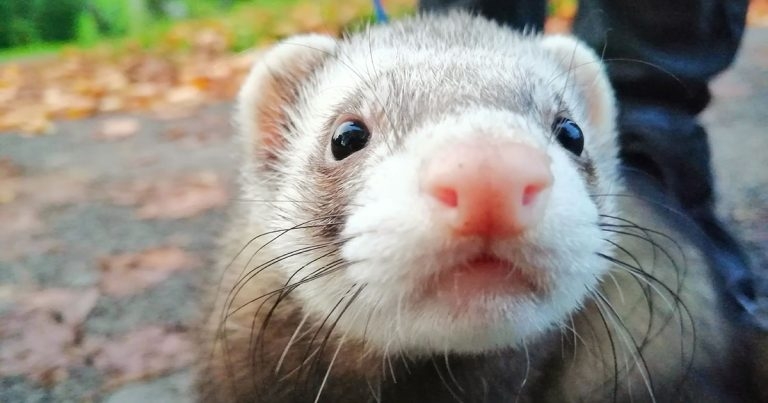26 Apr 2022
Environmental enrichments allowing for tunnelling, digging and human interaction are best, while rubber toys and any items that can trap claws should be avoided, according to RVC study.

Image: Lauren Thomas
Poor choice of toys or environmental enrichments can make ferrets more combative and less likely to play with others, according to research.
A new study by the RVC has revealed the toys and improvements to housing that can directly impact on ferrets’ health and well-being.
While good environmental enrichment is beneficial, inappropriate attempts to enhance a ferret’s housing can be ineffective, and cause stress and injuries. Researchers hope their findings will help owners and anyone working with ferrets to improve their welfare.
More than a million pet ferrets are in the UK, with 500,000 in the US, and RVC researchers developed an online questionnaire that received more than 750 valid responses from 17 countries – the majority (82.4%) from pet owners.
Most of the ferrets were housed with at least one other, and enrichments that were deemed to benefit the ferrets most involved tunnels (42.5%), digging (27.3%), human interaction (20.8%) and exploration (17.6%).
Rubber toys – which can be chewed and swallowed, causing blockages – topped the list of problematic items (45.1%), followed by any that could result in claws or other body parts being trapped (28.6%). These included some narrow tunnels and certain fabrics, including fleece, towels and loosely woven fabrics.
Among the key findings from the study were:
Collectively, the RVC hopes the findings will lead to more commercially available, safety-tested ferret environmental enrichments.
Charlotte Burn, associate professor in animal welfare and behaviour science at the RVC, said: “It’s really important that ferret keepers avoid hazardous rubber toys, narrow tunnels and claw-catching fabrics, because many of our respondents said these could injure their ferrets, sometimes requiring surgery or other veterinary assistance.
“The ferret keepers in our survey had some great tips about what ferrets seemed to most enjoy. Some are already commonly provided, such as wide tunnels, digging, and supervised exploration, but we’d like to encourage owners to try some of the rarer ones, too.
“These included paper bags for ferrets to rustle about inside, supervised water play, and scent trails with a healthy treat at the end. Scents to try include prey animal scents from fur, feathers or used rodent bedding, or certain herbs and spices – but ferrets seem to dislike the smell of peppermint.”
Alice Dancer, PhD student at the RVC and lead author of the paper, said: “The finding that large housing and high numbers of enrichment are possible in all ferret-keeping sectors is a really good sign for ferret welfare.
“We hope that these results help inspire ferret caretakers to consider the housing they use, offer ideas for new ferret enrichments, and raise awareness of enrichments which may harm their ferrets.”
The paper, published by Animals, is available online.